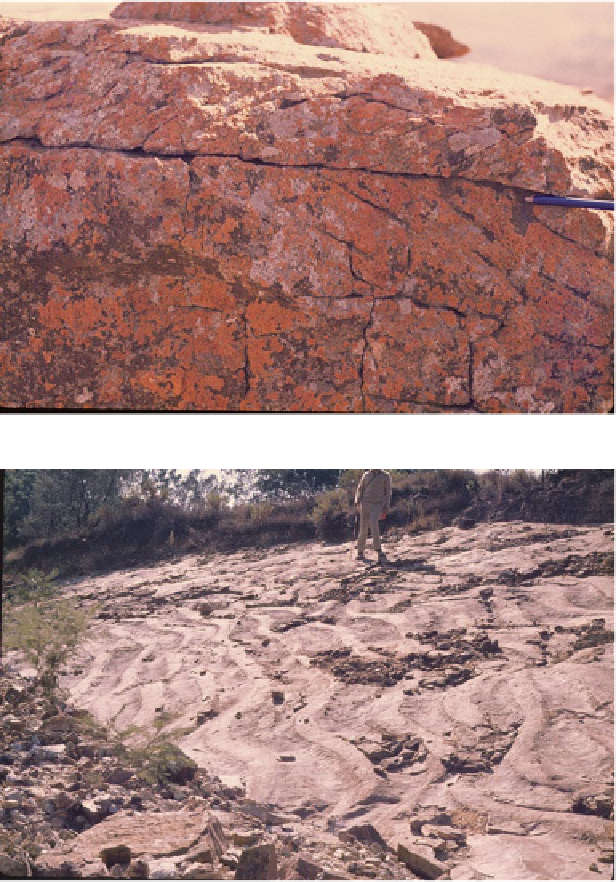Geology Reference
In-Depth Information
Fig. 15.11
Herringbone
cross bedding from the
Johannesburg Subgroup,
Witwatersrand Supergroup.
Note pen for scale
Fig. 15.12
Large-scale wave
ripples with flattened crests
from the Hospital Hill
Subgroup, Witwatersrand
Supergroup
contain internal ripple cross laminations directed up
the foresets. These ripple cross laminations show a
complex pattern of mudstone drapes. The laminated
sandstone, siltstone and mudstone facies association
attains a maximum thickness of 25 cm but commonly
is absent at the top of fining-upward packages as a
result of erosion. Vertically within the facies asso-
ciation, thick-thin pairs and systematic thickening and
thinning of laminations are developed. Desiccation
cracks are ubiquitous but are best preserved at the top
of upward-fining packages. Where laminations are
absent, mudstones are black and desiccated.
The vertical succession of strata within upward-
fining packages records the increased influence of tidal
currents with time at the expense of fluvial processes.
The switch to a dominance of tidal processes is
reflected in the upward decrease in the proportion of
conglomerate, the increase in abundance of mudstone
drapes on foresets, the presence of cyclic foresets, and
the occurrence of interlaminated sandstone, siltstone
and mudstone at the top of upward-fining packages.
Conglomerates reflect channel processes whereas
cosets of trough and tabular cross-bedded sandstone
and the laminated sandstone, siltstone and mudstone
were generated by flows modified by various tidal beats.
Cosets of trough and tabular cross-bedded sandstone
with or without mudstone drapes reflect lateral accre-
tion of sediment, whereas interlaminated sandstone,

